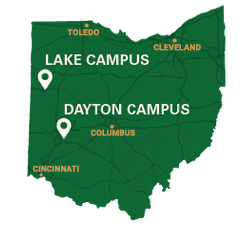A. Create a staffing and essential duty coverage plan
- Prepare for a limited number of researchers to staff facilities for a 45- to 60-day period.
- Identify and assign roles and responsibilities for essential functions.
- Consider limiting lab staffing to one person at a time, and develop a communication plan to verify the safety of the individual in the lab.
- Try to limit staffing to a maximum of 2 by staggering hours, and maintain adequate social distancing.
-
- Note that undergraduate researchers are not permitted to be on campus to carry out any research activities.
- Cross-train personnel to cover essential functions.
- Develop a plan to delegate authority in case any responsible individual is unable to make decisions.
- Identify experiments that can be scaled down, delayed, or stopped. Prepare a shutdown checklist.
- Plan for decontamination of workspaces in the event a staff member who has been in the lab becomes ill.
- Immediately notify your supervisor if you or any member of your research team becomes ill.
- Coordinate with colleagues who have similar research activities to cover critical activities with as few staff as possible.
- Perform work that can be done remotely -- such as data analysis -- off campus.
- Consider generating data now and postponing analysis that can be done remotely should access to facilities become restricted.
- Note that buildings may be locked, requiring a university ID to gain entry. In an extreme case, building access may be limited to critical personnel.
- Coordinate as appropriate with the Office of Research and Sponsored Programs and Environmental Health & Safety.
-
B. Prepare personnel to work remotely
- Researchers who are sick, immuno-compromised, or have other relevant circumstances should make alternative arrangements with their PIs or supervisors as needed.
- Make sure all staff update their emergency contact information.
- Create a contact list for all members of your research team, share that list with your team and your business manager/department administrator, and make it available to these parties online.
- Confirm personnel have access to campus IT resources via the university's VPN.
- Verify personnel have access to necessary files, data, and software applications.
- Determine how you will communicate with remote personnel.
- Review all plans with all members of your team.
C. Plan for managing lab equipment
- Identify critical lab equipment.
- Identify equipment that cannot be shut down.
- Identify equipment -- for example, liquid nitrogen dewars, inert atmosphere gloveboxes, vacuum lines, freezers, and incubators -- that requires routine monitoring.
- Determine how long it will take to shut down equipment and experiments. Document the safest and most expeditious procedures.
- Determine availability of remote monitoring and back-up power supplies to maintain critical equipment.
- Notify Environmental Health & Safety if required monitoring cannot be performed.
- Plan for the possibility that Facilities Management and other service providers may be unavailable to perform repairs.
D. Plan for managing materials and supplies
- All essential research must be conducted in appropriate laboratory space. Researchers must not take materials -- with the exception of laptops or other computers and data storage devices to any offsite location, including their homes.
- Animals may not be removed from university facilities.
- Exercise special care with identifiable human subjects’ data. Do not place such data on a storage device or on a laptop, unless the laptop is encrypted.
- Identify sensitive materials and supplies.
- Determine whether brief utility outages or other situations require contingencies for temperature-sensitive or other special materials.
- Secure radioactive and other hazardous materials. Store hazardous materials and waste in the appropriate environment in case access is not available for an extended period.
- Plan for disruptions in the supply chain:
- Assess which supplies and services are truly critical.
- Contact vendors to inquire about potential disruptions and identify alternative sources.
- For supplies and services that are critical even during a research curtailment. Work with your team and your department or building manager to include this need in your continuity plan.
Plan for the eventuality that scientific service centers and other fee-for-service resources might be unavailable.

